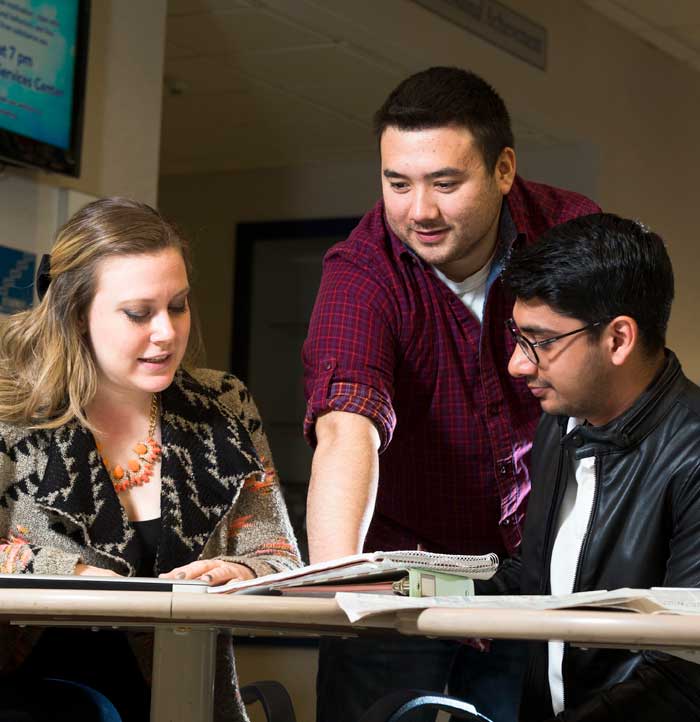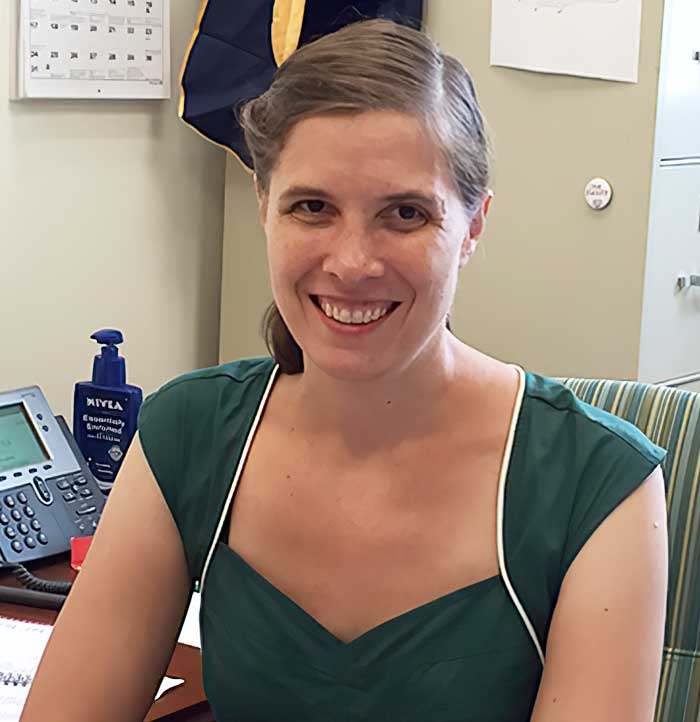Open a world of career possibilities in business, computer science, engineering, the physical sciences, and education. Work closely with faculty members who help you succeed through finely-targeted classes, guest speakers, and abundant research and internship opportunities. Mathematics is a collaborative venture, not a solitary pursuit. Every faculty member works to develop your ability to not only think mathematically about problems, but to become fluent and precise in expressing mathematical concepts.
For students with more specialized interests, we also offer programs in Mathematics with Business Applications and Mathematics with Science Applications.
Curriculum
BA or BS? Or a dual degree? If you are considering Mathematics as a major, you will want to consider the benefits of each degree program.
Bachelor of Arts
- Mathematics —This degree provides a comprehensive understanding of mathematics and a strong liberal arts foundation to prepare students planning to pursue advanced degrees in other disciplines, such as business, engineering, or computer science.
- Mathematics Education —This program leads to New York state initial teacher certification, mathematics, grades 7–12. During the second semester of the sophomore year, students who are pursuing a BA in Math apply for admission to the School of Education and choose Mathematics Education as a co-major.
Bachelor of Science
- Mathematics —This degree prepares students for professional pursuits or graduate studies in the field of mathematics. A BS in Math has seven options to choose from, some focusing on business, others on science. But if a laser focus on math is what you're after, a BS with an option in math or applied math is an even deeper dive into the discipline. Every math major takes 41 credits in the subject, but those who choose the BS in Math with a math or applied math option take 50 credits.
Dual-degree Programs
Qualified students may apply for an accelerated dual-degree program either as incoming first-years or during their junior year. These programs offer a streamlined, cost-effective, and focused way to earn both an undergraduate and graduate degree in less time than if each degree was pursued separately.
Options include:
Student Experience
Internships/Experiential Learning
Your education as a mathematics student extends beyond the classroom, to internships, guest lecturers, local and national competitions, and field experience, where research and hands-on experience prepares you for graduate school and your career. Hofstra also offers clubs and a chapter of the Pi Mu Epsilon mathematics honor society, enhancing your learning with social and networking opportunities.

Recent Alumni Outcomes
Students who major in Math at Hofstra move quickly into employment or graduate school at prestigious institutions.
Among the places where recent math graduates are employed are:
- Brookhaven National Laboratory
- Department of Energy Oak Ridge National Lab
- Esurance Insurance Services, Inc.
- Goldman Sachs Group, Inc.
- Holy Cross High School
- Korn Ferry Hay Group
- NASA
- PNC Financial Services Group, Inc.
- Valley Stream School District
- Zurich North America
Our graduates also are pursuing advanced degrees at such institutions as:
- Carnegie Mellon University
- College of William and Mary
- Cornell University
- Hofstra University
- New York University
- Penn State University
- Rutgers University
- University of Arizona
- University of Massachusetts
- Yeshiva University
100%
job, grad school or both
100%
accepted a job within six months of graduation
$51K
median salary*
Faculty
Meet Dr. Johanna Franklin
Johanna Franklin is an associate professor of mathematics whose research interests include mathematical logic, computability theory and algorithmic randomness. She organizes the Math Department’s annual seminar series and is known among students for her patience and ability to make confusing concepts accessible. She recently won the Distinguished Teaching Award from the Metropolitan New York Section of the Mathematical Association of America (MAA).


